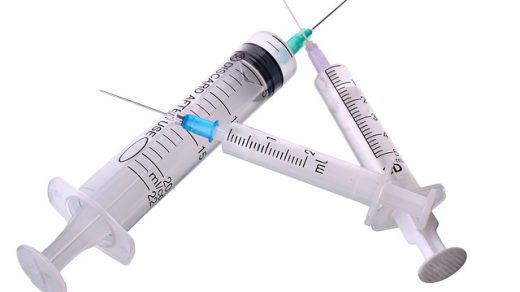It’s been a long week, and I’ve spent a good bit of it trying to process the recent episodes of violence against healthcare workers in Tulsa and Los Angeles. The Tulsa incident had a particular impact on me since I did some EHR optimization work for Warren Clinic in the past. As the news reports unfolded, and before we knew exactly where the shooting occurred, I wondered if any of the staff that I worked closely with had been impacted. Although it turned out that I hadn’t worked with any of the victims, it was still devastating to learn of the loss of dedicated healthcare professionals who had given so much to their patients and who still had many more years of service ahead of them.
Hearing of the stabbing in Los Angeles later in the week was almost too much to bear. Those who see patients in person go to work every day knowing that it’s going to be difficult, but generally they don’t expect to be shot or stabbed on the job. I’ve worked in plenty of “tough” clinical locations. At one hospital emergency department, I had to park in a secure garage that was lined with chain link fence, essentially creating a cage. You had to have a badge to get in or out via car and accessed the hospital through a secure elevator that either took you directly into the ED or up to the ICU waiting room. I often wondered what would happen if the power went out, but fortunately it never did during the years I worked there.
Patients and visitors to that facility had to go through metal detectors. I had a security guard posted at my clinical workstation in the event things became contentious. Sometimes my patients were handcuffed to their gurneys since they were being evaluated to ensure they were “fit for confinement” after being arrested by local law enforcement.
Additionally, the emergency department exam rooms all had two doors on different sides of the room so that there was always a way for you to get out. I’ve worked in large urban trauma centers, locked psychiatric emergency units, and critical access hospitals where all kinds of unusual cases have come through the doors. I’ve had patients become agitated and aggressive before, and I was even stalked by a patient, but even in those circumstances I never actually imagined that I was at risk of being shot, stabbed, or killed while trying to help patients.
Violence against healthcare workers is at an all-time high. It’s not just physical violence or homicide, but more often includes verbal abuse and threats. The Bureau of Labor Statistics indicates that healthcare and social assistance workers have the highest rates of injuries due to workplace violence. In fact, workers in those industries are five times more likely to be injured at work than workers overall. Incidents of workplace violence have been rising nearly every year since they were tracked, beginning in 2011. Although the Occupational Safety and Health Administration has guidance for employers, there are no federal requirements for healthcare organizations to protect their employees from workplace violence.
Some states have addressed the issue. A Wisconsin law makes battery against certain healthcare workers a felony. There has been some action at the federal level, but nowhere near enough. Personally, I’d like to see healthcare organizations have to report their statistics just like college campuses do – collecting detailed information about violent incidents and reporting their numbers annually. At my last in-person physician gig, my employer had numerous episodes of workplace violence and no clear mitigation strategy. Incidents were hushed up and employees were discouraged from discussing them for fear that staff wouldn’t want to pick up shifts at certain locations. There certainly wasn’t any kind of post-event debriefing for those impacted by violent incidents. Everyone was just expected to pick up and carry on, which is exactly the opposite of what is needed.
Those incidents seemed to escalate during the initial phases of the pandemic, when everyone was scared and uncertain. They became worse as certain unapproved treatments were pushed on social media, and patients would become aggressive when told we would not prescribe ivermectin or other drugs that had been shown to not only have no benefit but to have significant risks. Patients argued with us about their diagnoses despite having positive lab results and told us directly to our faces that we didn’t know what we were talking about and that we were either lying or part of a vast conspiracy. One of the worst things I had to deal with during the pandemic was patients who refused to wear a mask in the exam room, or who would take it off as soon as I walked out the door, to fill the room with their exhaled breathing so I could walk back into a cloud of virus. To have to deal with that hour after hour, day after day, and to not be able to confront it for fear of lowering patient satisfaction scores was one of the things that contributed to my departure.
Still, I’m here, and although no one has tried to directly kill me at work, it’s certainly on my mind that what happened last week could have happened to any one of us at any time. Along with many of my colleagues, we’re feeling a certain level of survivor’s guilt after seeing so much loss in the healthcare community over the last few years. Although we’ve gotten better at protecting ourselves from disease, the steps that we need to be taking to protect ourselves from workplace violence are less than clear. Regardless, healthcare employers owe it to their teams to assess the safety and the workplace and the wellbeing of those in it. Every healthcare organization should be offering employee assistance programs to those who are struggling with the recent tragedies and increasing violence.
Readers may be asking themselves what all this has to do with healthcare IT. If you’re a frontline IT support person who works in clinical areas, the answer to that is clear. It’s also a heads-up about what the people you’re trying to support might be going through. If they seem on edge or preoccupied, there’s a good chance that they are one of both of those. I’m sure that if I were seeing patients in person, I’d be less interested in learning about new features or workflows that are about to be deployed than I would be in learning how the hospital plans to keep me safe. Even if you’re not working in a clinical area, you’re not immune to workplace violence. All of us should be standing together to demand solutions that ensure we all make it home to our families at the end of the workday.

Email Dr. Jayne.


